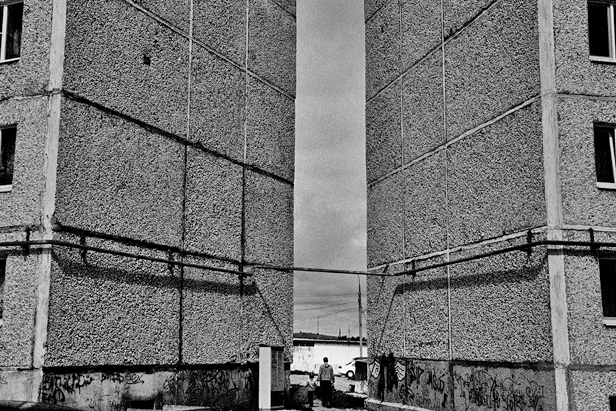[POST]Industrial Urals: Dinas, named after Craig-y-Dinas rock in Wales

Dinas is one of the microregions of Pervouralsk (Sverdlovsk Oblast), a Urals city 40 km west of Yekaterinburg. Yet it is a fully functional settlement in its own right.
Sergey Poteryaev

The main enterprise in the locality is Pervouralsk Silica Plant, which makes a wide range of refractory products for the ferrous and non-ferrous metallurgy and machine building industries as well as for construction materials and siliceous raw material for the production of ferroalloys.
Sergey Poteryaev
The village is situated between the Chusovaya and Shaitanka rivers. At the northern edge of the settlement lies Podvoloshnaya station, which is on the Trans-Siberian Railway.
Sergey Poteryaev
Dinas silica is the general term for a refractory containing at least 93% silicon dioxide (SiO2). It is made from quartz rocks containing calcite and ferrite cemented grains (2-3%), and used in brickwork for industrial furnaces.
Sergey Poteryaev
The name comes from the Craig-y-Dinas rock in Wales (UK), where the first such refractory was made. The product is manufactured at the plant and lent its name to the village.
Sergey Poteryaev
Production of siliceous refractories in the Urals began in 1928. The Gora Karaulnaya crystal quartz deposit was chosen as the raw material base for the future plant.
Sergey Poteryaev
Construction was hampered by the marshy terrain and lack of construction equipment and manpower, but, despite that, the carcass of the first production unit was built in 1931, followed by the installation of equipment.
Sergey Poteryaev
In May 1932 a narrow-gauge road was laid from the pit to the unit to supply quartzite, and in June that same year the first tons of refractory products (Ural Dinas) were produced. It marked the birth of the plant.
Sergey Poteryaev
A particular feature of the plant is its relative proximity to slag-heaps, which in certain weather look like the dark side of the moon. It is a lifeless space, at the top of which a view of the remaining industrial landscape of Pervouralsk opens up.
Sergey Poteryaev
The plant is the only business in Russia that produces silica refractories for coke, glass, electric iron-smelting, open-hearth, and blast furnaces.
Sergey Poteryaev
In November 1992 the plant was auctioned off, and a new phase in its development began. The changing economic conditions in Russia during perestroika led to a sharp decline in the metallurgical industry and, likewise, a collapse in demand for silica refractories. By 1998 output at the plant had dropped by 6.5 times against 1991.
Sergey Poteryaev
The upheaval was reflected in the community. This once thriving region turned into a run-of-the-mill Urals settlement.
Sergey Poteryaev
Iron ore here was discovered back in 1702 near Mount Volchikha by Fyodor Rossov, who hailed from the village of Utkinsk.
Sergey Poteryaev
In the summer of 1730 the Demidov dynasty began building an ironworks on the banks of the Shaitanka river, which later gave rise to the city of Pervouralsk.
Sergey Poteryaev
In 1931 construction began on Pervouralsk New Pipe Plant, the largest such factory in Europe. Although the city no longer has the status of a single-industry town, the plant certainly employs a very large number of residents.
Sergey Poteryaev
A view of part of the village of Dinas. In the background stands the city of Pervouralsk.
Sergey PoteryaevSubscribe
to our newsletter!
Get the week's best stories straight to your inbox